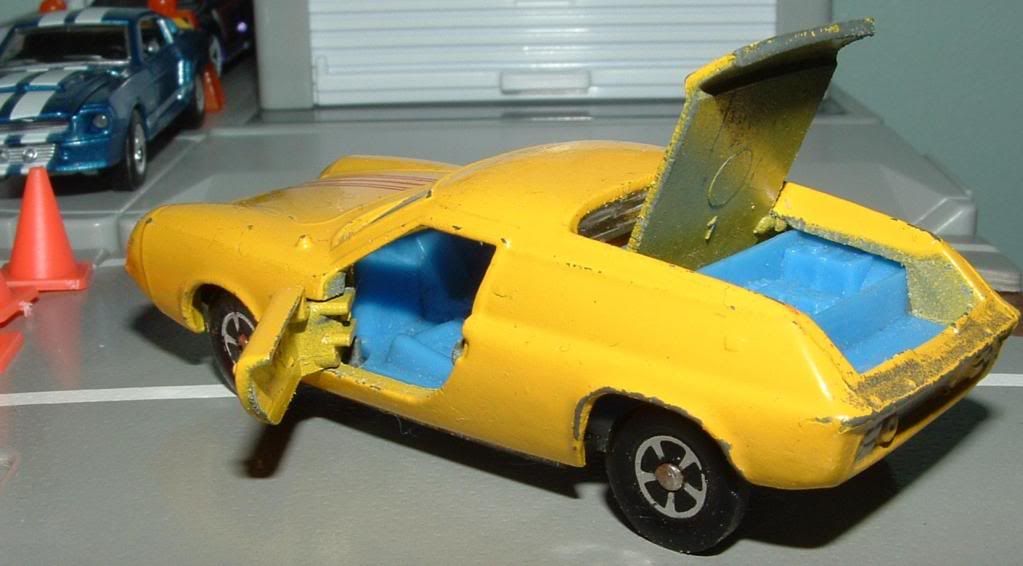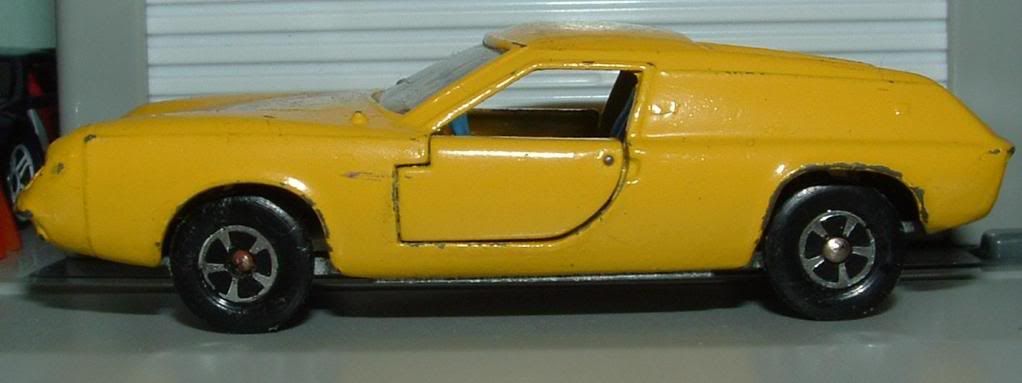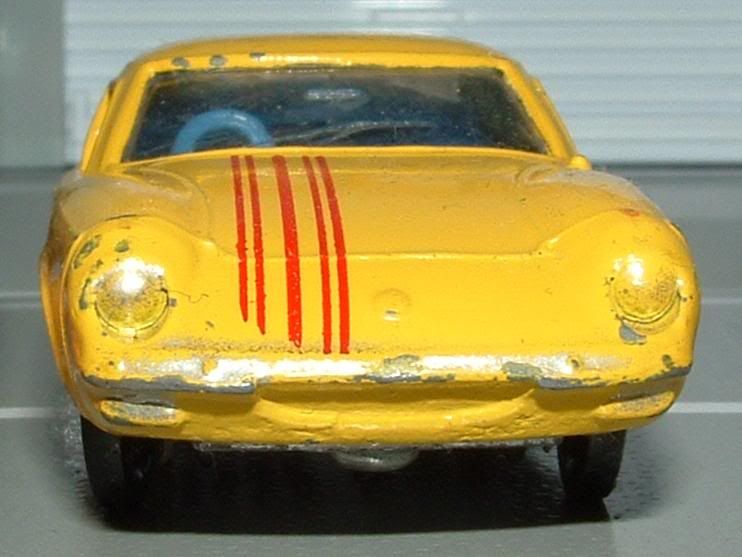
A blog focusing on 1/64 diecast from such popular brands as Hot Wheels, Matchbox, Johnny Lightning, M2 Machines, GreenLight, Tomica, Yat Ming, Majorette, MotorMax, Siku, Corgi, Guisval, Playart, Ertl, Zylmex, Racing Champions, & many more. Swifty's Garage features a daily Car Of The Day and news updates from your favorite brands!
Friday, October 28, 2011
Car Of The Day: October 28, 2011
Today's car of the day is Impy 1966 Lotus Europa.
The Lotus Europa was a two door mid-engined GT coupé built by Lotus Cars from 1966 to 1975. In 2006 Lotus began production of a totally new, Lotus Elise-derived design, a mid-engined GT coupé named Europa S.
The original Europa used Lotus founder Colin Chapman's minimalist steel backbone chassis that was first used in the Lotus Elan, while also relying on its fibreglass moulded body for structural strength. The Europa was based on a prototype built to compete for Henry Ford II's contract to build a Le Mans race car in the early 1960s.
The Europa was designed and built to be an embodiment of Chapman's oft-stated philosophy of automotive design: "Simplify, then add lightness."
The four-wheel independent suspension was typical of Chapman's thinking; the rear suspension consisted of two relatively large trailing arms, one lower locating link per side, and the axles were used as upper locating links; very similar to Formula racing car designs of that era. Aside from the doors, bonnet (hood), and boot (trunk), the body was moulded as a single unit of fibreglass.
The car's handling prompted automotive writers to describe the Europa as the nearest thing to a Formula car for the road.
In all, Lotus built about 9,300 Europas.
For more information and pictures of the real car please visit: Lotus Europa
"Simplify, then add lightness." Lotus needs to get back to this philosphy.
The second generation Renault 5, often referred to as the Supercinq or Superfive, appeared in 1985. Although the bodyshell and chassis were completely new (the platform was based on that of the Renault 9/11), familiar 5 styling trademarks were retained; styling was the work of Marcello Gandini. The new body was wider and longer featuring 20 percent more glass area and more interior space, with a lower drag coefficient (0.35), as well as 57.4 mpg-US (4.10 L/100 km; 68.9 mpg-imp) at 55 miles per hour (89 km/h) in the economy models. The biggest change was the adoption of a transversely-mounted powertrain taken directly from the 9 and 11, plus a less sophisticated suspension design, which used MacPherson struts.
The concept originated during 1963 with drawings by Ron Hickman, director of Lotus Engineering (Designer of the original Lotus Elan, as well as inventor of the Black and Decker Workmate), for a bid on the Ford GT40 project. That contract went to Lola Cars as Colin Chapman wanted to call the car a Lotus and Henry Ford II insisted it would be called Ford. Chapman chose to use Hickman's aerodynamic design (with a still respectable today drag coefficient of Cd 0.29) as the basis for the Europa production model; originally intended to succeed the ageless Lotus 7.
Subscribe to:
Post Comments (Atom)







No comments:
Post a Comment